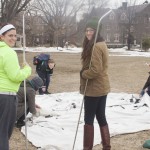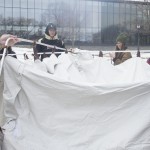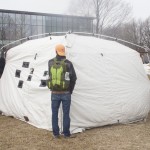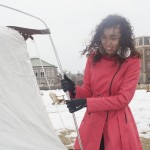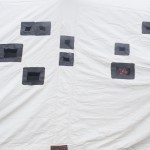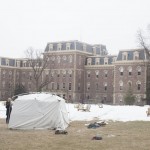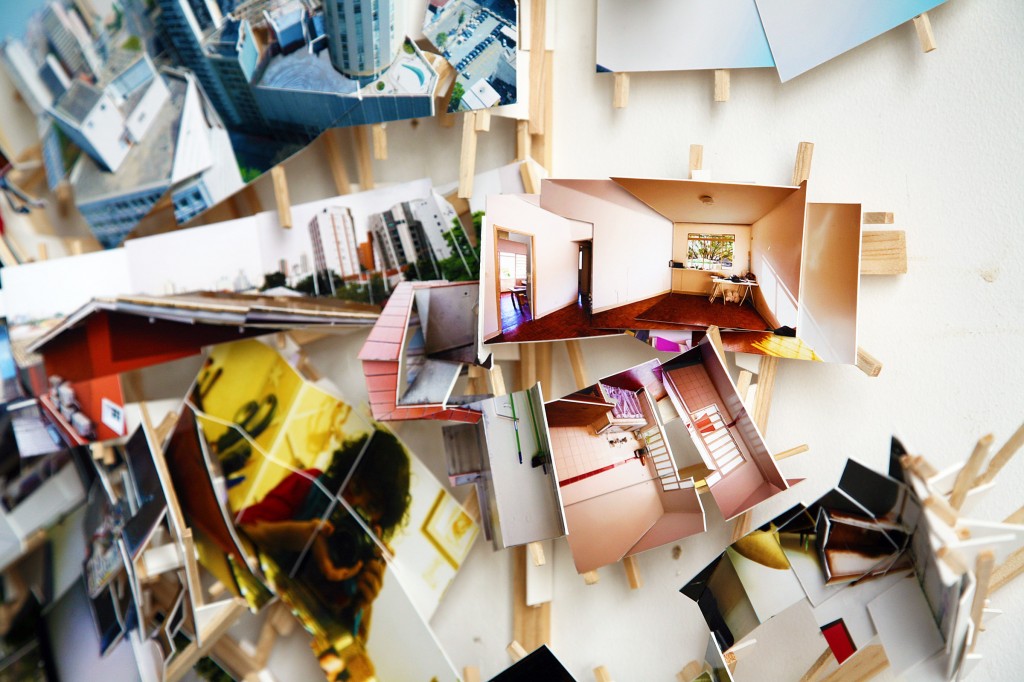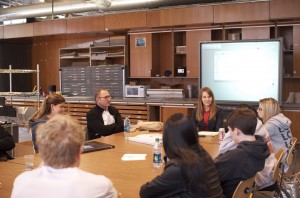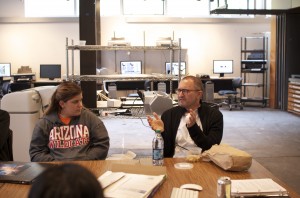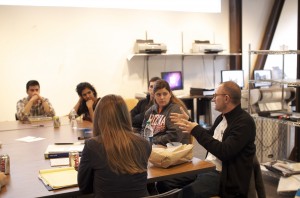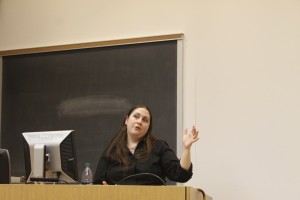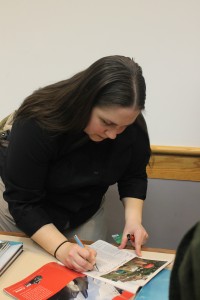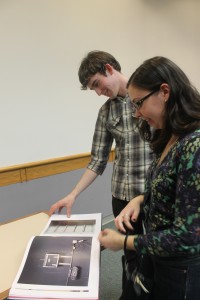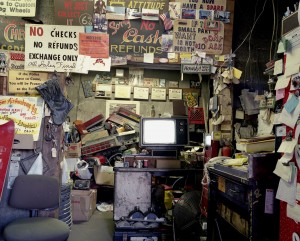Artist-In-Residence Trudi Lynn Smith sets up a Portable Camera Obscura with Lafayette students during her residency.
Author: Greta Bergstresser (Page 1 of 3)
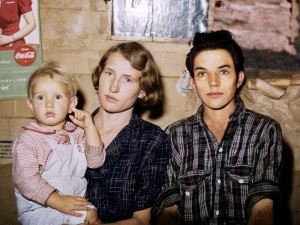 Photographer and digital artist, Debbie Grossman will be visiting Lafayette the week of Oct. 20 for an artist residency. She will be giving a talk on Wed. Oct. 23 at noon in Williams 108, free and open to the public. She will also be meeting with Honors students and talking to various classes.
Photographer and digital artist, Debbie Grossman will be visiting Lafayette the week of Oct. 20 for an artist residency. She will be giving a talk on Wed. Oct. 23 at noon in Williams 108, free and open to the public. She will also be meeting with Honors students and talking to various classes.
Learn more about Debbie’s work: www.debbiegrossman.com
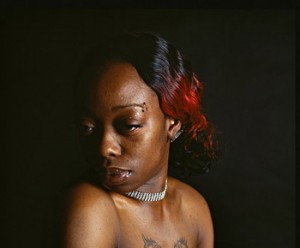 Deana Lawson is a photo-based artist born in Rochester, NY. Lawson received an MFA from the Rhode Island School of Design in 2004. Her work focuses on the psychological, personal, political and historical experiences that are expressed through the body. Lawson is a recipient of the 2008-09 Aaron Siskind Fellowship Grant and a NYFA Grant in 2006. Publications include Time Out NY, Contact Sheet, and Photography Quarterly. Lawson’s work has been exhibited widely, and she has held artist residencies at Light Work and Visual Studies Workshop.
Deana Lawson is a photo-based artist born in Rochester, NY. Lawson received an MFA from the Rhode Island School of Design in 2004. Her work focuses on the psychological, personal, political and historical experiences that are expressed through the body. Lawson is a recipient of the 2008-09 Aaron Siskind Fellowship Grant and a NYFA Grant in 2006. Publications include Time Out NY, Contact Sheet, and Photography Quarterly. Lawson’s work has been exhibited widely, and she has held artist residencies at Light Work and Visual Studies Workshop.
Lawson refers to the subjects of her photographs as “her family.” Although she is not related to them by blood—in fact, they are nearly all strangers—the pictures are remarkably intimate. Lawson composes almost every element, often sketching scenes out on paper before working with the camera. Reflecting Western and African portraiture conventions, the works examine “the body’s ability to channel personal and social histories, drawing on the various formal and informal languages of the medium and its archival capabilities,” the artist says. The result is a collection of body compositions portraying humans’ limitless variety. Lawson currently lives and works in Brooklyn, New York.
Deana will be at Lafayette from Feb. 27-March 4 working on the creation of her own work. While here, she will meet with advanced art students and give an artist talk on Thur. Feb. 28 at 4:10pm in Williams 108.
Local photographer Theo Anderson will be giving an Artist Talk in conjuncture with his exhibit at the Williams Center Gallery. The talk will be held Monday Feb. 4 from 4:10-5:30pm in Williams 108. The exhibit runs until Feb. 10.
Isidro Blasco will be coming to Lafayette as an Artist-In-Residence from Nov. 8-16 to meet with students and to create art. While here, Isidro will be creating a project with the help of Lafayette students and faculty. Students will be given the opportunity to work with a practicing artist and to participate in his artistic process. Isidro will also be giving a lecture on Thursday November 15, 2012 at 12:00pm in Williams 108- free and open to the public.
Last Fall, photographer Lisa Kereszi spend 5 days at Lafayette meeting with students and working on a project. She will be returning for the second half of her residency in March 2012 and will give an Artist talk on Wednesday March 7, 2012 at 4:15pm in Willaims Center for the Arts, Room 108. Imogen Cain (2012) interviewed Lisa to find about more about her process and her photographs:
1) Where do you get your inspiration from and who are your influences?
I think I get a lot of inspiration just from the world around me, and also the Southeastern PA world I grew up in – the suburbs of Philly, but not the Main Line. I also am an avid collector of old photos, ephemera, drawings, postcards. So, I draw a lot of inspiration form that. My photography is also an act of collecting, or scavenging, saving things for disappearance, in a way. I am also very indebted to the work of Walker Evans, whose trail I sniffed out while in the Easton area. I visited some of the sites he photographed back in 1935 when he passed through your area. This is part of why I was so interested to come to Lafayette to be an artist-in-residence. My Eastern European great-grandparents settled in Bethlehem, and raised my grandfather in the shadow of the same steel mill Evans photographed so starkly from the hill of St. Michael’s Cemetery. I had known that image the whole time I was a student and practitioner of photography, but had no idea I had such a personal connection to the place. This past visit, during the 1st part of my residency, I was able to make an interesting picture of the stacks reflected in my family’s front screen door on East 3rd Street. Other photographers whose work I feel connected to are Robert Frank, Brassai and Eugene Atget. I even share a birthday date with one of them!
2) What was it like to work for Nan Goldin?
It was a wonderful learning experience for a 21-year-old right out of college, practically. I recall distinctly sitting in my dorm room at Bard, paging through her book, the Ballad of Sexual Dependency, telling my then-boyfriend that I hoped to get a job working for her. Then, I sort of lucked into it. I had no idea about the big art world I was stepping into. I met John Waters and Philip Lorca diCorcia, and many of Nan’s friends who famously peopled her iconic pictures from the 70’s and 80’s: David Armstrong, Sharon, Bruce. Besides seeing how a well-known artist functions on a day-to-day basis, I got to assist her and be present while the exhibition and catalog for her retrospective at the Whitney, I’ll Be Your Mirror, was being put together. I also got private, up-close access to her files of original slides, most of which have never been seen by the public. Her work definitely influenced my use of light and color. I was drawn to her in the first place, so there must have been an artists connection there to begin with.
3) Why do you prefer analog photography?
I like the way color and light is rendered on film, or maybe I am just sued to it, and it works for me! also, when I do use a 4×5, the movements and focus detail that camera affords is unbeatable at $5 a shot, rather than buying an outrageously-expensive digital back. However, I am actually in sort of a transitional phase, testing and trying out a few digital cameras with Zeiss lenses to try to make the plunge into mostly shooting digitally. The work flow is just so much better with digital – no more hours and dollars spent scanning hundreds of negatives a year.
What tools and camera do you use?
I have been behind for years in making workprints, with a backlog of edited contacts sitting there waiting to be dealt with, something I only can get back on top of when teaching and shooting and working dies down. Life gets in the way of art sometimes. Digital is also much better in low-light situations. I realized that last summer on a trip to Berlin w/ my fiance, who is also a photographer. He was able to make pictures w/o asking for permission in many places we visited, because he was using the Mark 2, which is great in darker places. I had my Mamiya 7, which only opens up to f4. A flash would have caused too much distraction, and could have gotten us kicked out of some places. The year prior to that, in Italy (a country famously difficult to wade through bureaucracy in for getting permission.) That said, staring at the computer screen this much is wearing at my eyes.
4) What is your process for making work?
I go somewhere that I am drawn to, for one reason or another (subject, personal connection, history) and just make pictures by myself. On a tripod w/ natural light indoors, or just roving on foot if outdoors. My interior pictures are made with long exposures necessary to attain good depth of field at f8 or 11, and I only add flash if I really need to fill in a shadow. I don’t do any post-production besides basic color correction, burning and dodging. I get into a zone where I am just following my nose, waiting for that next great thing, lit in a certain way, to hit me in the face when I come around a corner. It’s so much about that moment of discovery, and then the minutes after, in which I study the place or thing and move around it, trying to figure out how best to make it express itself in a meaningful, poetic way. I hate previewing a place, or returning to the scene of the “crime.” Pictures in which I have some sense of a preconceived notion almost always fall flat.
5) What is your favorite kind/type of photography (portraiture, landscape, abstract etc.)?
I guess details in the landscape and also interiors, as far as what I do. I am interested in some abstraction, in the way I pull a scene out of it’s real setting and possibly give it a new meaning. I love how a floor can often flip up and create cognitive dissonance when you look at the print up on the wall, vertically. In other people’s work, though, I love street photography, like that of Garry Winogrand and Tod Papageorge, whose work just always floors me. (It’s harder than it looks, kids.) I also love the intense portraiture of August Sander and Diane Arbus, and local hero Judith Joy Ross, even though I don’t make work anything like that myself.
6) What did you do while you were here and what do you plan to do when you return? What is your relationship with this area?
This goes back to my original answer. In March, I plan to retrace some of Evans’s steps, and try to locate the site of the Joe’s Auto Graveyard he also shot back in the Thirties. I have two leads, one better than the other, but I don’t know how the researchers knew the sites for 100% sure; I tend to be a stickler and need proof. I had no luck at your local historical societies in locating a business by that name in town records. However, perhaps one of the sites will be close enough in spirit, at least. Not much is as it was. My reason for being so obsessed with this location is that I will put to bed a book this March about my own family’s auto junkyard, which was also named Joe’s, oddly enough. That grandfather who I mentioned in Bethlehem started the business in 1949, and I imagine that he and his father might have gone to Evans’s Joe’s when my grandfather was a child. Who knows, maybe it gave him the idea. I know that he started out by helping his dad support the family by collecting and selling scrap from the street, something I know my dad does today, from time to time. The book is called Joe’s Junk Yard, and will be published by Damiani for a Fall 2012 release.
Lisa’s work can also be seen in this recent release of the New Yorker: http://www.newyorker.com/online/blogs/photobooth/2011/12/goings-on-about-town-2011.html
Lafayette’s Professor Karina Skvirsky was among four selected artists (Melanie Baker, A.J. Bocchino, Marc Lepson, Karina Aguilera Skvirsky) at The Aperture Foundation’s “What Matters Now? Proposals for a New Front Page” interactive and emerging exhibit this past September. The artists were chosen because they each engaged the notion of the front page, its content or form in some way. Their works, “created between 2001 and 2007, not surprisingly addressed such events as 9/11 and the wars in Afghanistan and Iraq. The projects reinterpret the front page at a moment when our information age is passing into our days dominated by short and frequent bursts of information delivered by social media. Still, the artist’s hand emphasizes the importance of the local in reporting and receiving information as well as the transparency or bias of editorial directions, which has a history and a context” (Erin Donnelly). The show, curated by Fred Ritchin, was a huge success. You can read more about it here: http://aperture.org/whatmattersnow/about-what-matters-now/
Professor Skvirsky hung works from the A Nation Challenged series . Caves, Fear, First Phase, Snow, 2003. The series was made by scanning images and articles from the Nation Challenged Section of the New York Times that came out after Sept. 11, 2001. In this series Karina explores how the war is pictured and presented by the media as well as visual strategies inherent to digital technology (montage and the appropriation of images from the web). She digitally added Roadrunner icons and used its color palette to render the original war photographs, shifting their interpretation towards a familiar representation of the American landscape rather than a foreign one. She also removed text from the original articles to provide a new context for the images, replacing it with text that references the landscape and not the war. This emphasis on the landscape provides an alternative to viewing Afghanistan as enemy territory and suggests similarities with the Roadrunner Landscape. The titles of each image refer to the dates when the original photographs and articles were printed and each print is approximately 17 x 22 in. “Karina Aguilera Skvirsky’s manipulated images make those of the “newspaper of record” at once less sentimental, less alien and also more clearly fictive” (Erin Donnelly).
Deborah Willis also invited Professor Skvirsky to her round table session on Friday, September 16th at the Aperture Foundation with NYU students, Erin Donnelly, Lori Novak, and Fred Ritchin.
Check out this video of Professor Skvirsky talking about the work she hung and the facebook album of the exhibition below! http://aperture.org/whatmattersnow/2011/contributing-artist-karina-aguilera-skvirsky/

